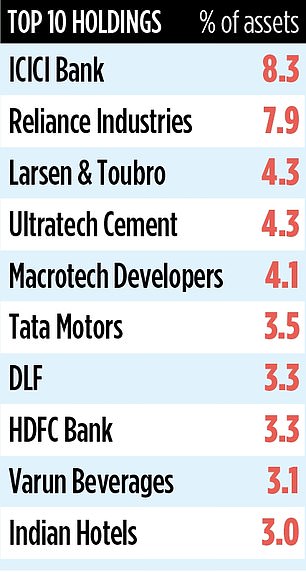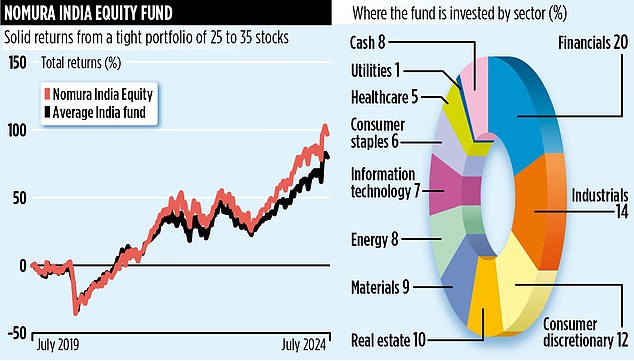Table of Contents
“Guess which are the best performing stock markets over one, three, five, seven, 20 and 30 years?” asks Vipul Mehta, manager of Nomura India Equity Fund, expectantly. Without an answer (would you know?), Mehta reveals: “The US and India. The two markets take turns being number one and number two. However, India is yet to get the recognition it deserves.”
The Nomura fund has been investing in a carefully selected portfolio of 25 to 35 Indian companies since its inception in 2017. The companies include Indian heavyweights such as ICICI Bank, Reliance Industries and Tata Motors.
The portfolio is selected across all sectors and involves in-depth analysis and visits to Indian companies to assess their prospects.
It has grown to about $1,876.9 million in assets under management at the end of May and has turned a £100 investment into £156 in three years, compared with £149 for the average Indian fund.
And while the Indian market has already delivered a compound return of 8% over the past 30 years, in dollar terms, Mehta is confident that there is still much to do. “If all goes well globally and locally, I think India will grow by 7%,” he says.
“But if everything goes wrong, we will probably end up growing at a rate of 5 percent. But if we assume that growth will be 6 percent a year for the next five years – and I see no reason why that should not happen – India will become the third largest economy by the end of 2027, overtaking Germany and Japan.”
Mehta is aware that there could be obstacles on the horizon, but says there are major factors that will further drive the process.
First, the youth population. India has a population of 1.4 billion people with an average age of 30 years. This continues to drive growth in productivity, consumption and all activities.
However, Mehta adds that the risk is that six to seven million people will enter the workforce every year and jobs will need to be created for them. “If that doesn’t happen, the result will be social insecurity or unrest,” he says.

The second factor is spending on infrastructure. “There are now 160 airports and many cities are building metro networks,” says Mehta.
And the third is a big focus on manufacturing and exports.
Mehta points to a recent Made in India campaign. India manufactures defences and trains, and some production is moving to the country from China. The combination of recent growth and increased potential means that domestic and international investors are sensing the investment prospects in India.
However, Mehta still sees opportunities. “Valuations are expensive, but they are not in bubble territory and I see no reason for them to collapse,” he says.
Even the election result in India failed to dampen Mehta’s optimism. Narendra Modi of the BJP was back running for a third term as prime minister, but his previous majority was reduced and his party formed a coalition with two allies.
India’s stock market fell 7% on the news but recovered most of its losses once the coalition was formed. “Markets fell because an overwhelming majority was expected,” says Mehta. “There doesn’t seem to be any threat to the government’s survival for the next five years or to Modi being prime minister unless he hands over the baton.” The fund has an ongoing fee of 0.93%.
DIY INVESTMENT PLATFORMS

AJ Bell

AJ Bell
Easy investment and ready-to-use portfolios

Hargreaves Lansdown

Hargreaves Lansdown
Free investment ideas and fund trading

interactive investor

interactive investor
Flat rate investing from £4.99 per month

eToro

eToro
Stock Investing: Community of Over 30 Million

Trade 212

Trade 212
Free and commission-free stock trading per account
Affiliate links: If you purchase a product This is Money may earn a commission. These offers are chosen by our editorial team as we believe they are worth highlighting. This does not affect our editorial independence.


